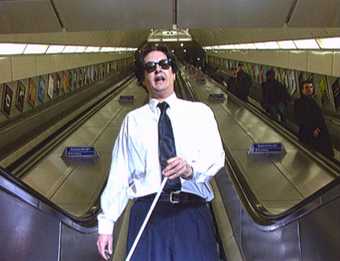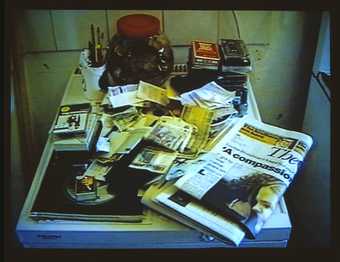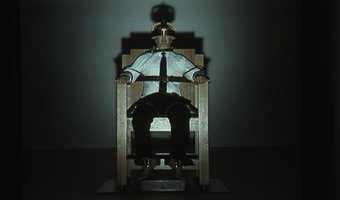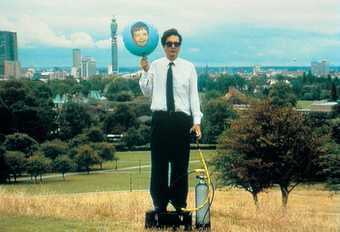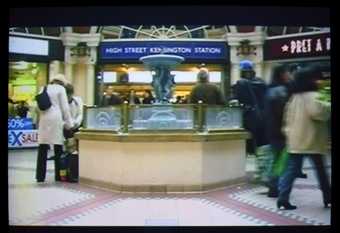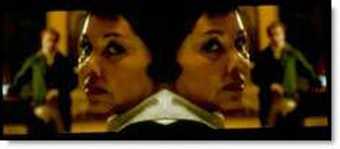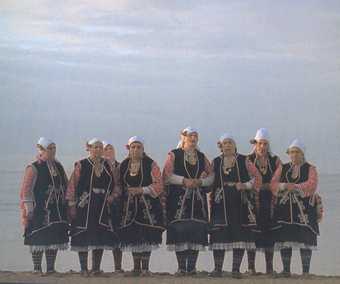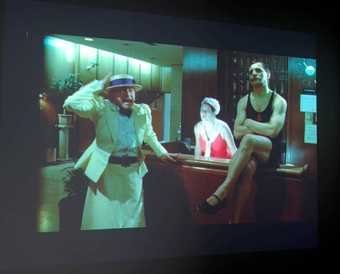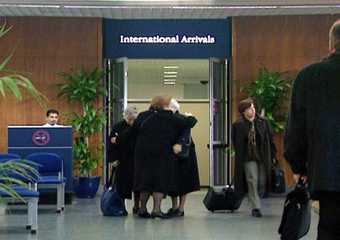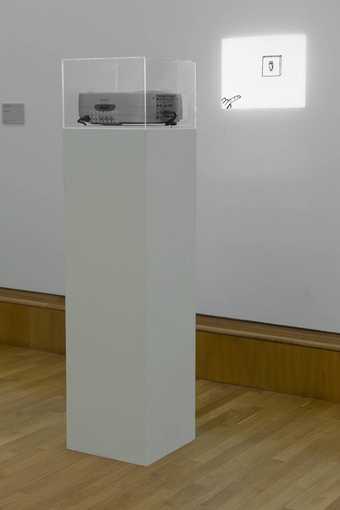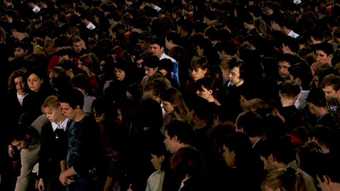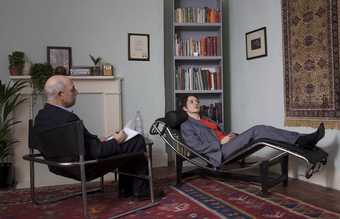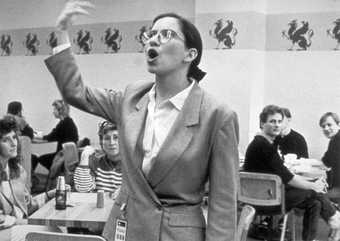
Not on display
- Artist
- Simon Martin born 1965
- Medium
- Video, projection, colour and sound (stereo)
- Dimensions
- Duration: 12min
- Collection
- Tate
- Acquisition
- Purchased 2008
- Reference
- T12765
Summary
Wednesday Afternoon is a meditation on the act of looking, filmed in The British Museum and Victoria and Albert Museum in London, by the artist on a series of afternoons. An anonymous male narrator with a soft Canadian accent muses on the experience of a museum visit, as the camera’s gaze falls upon objects of curiosity – treasures and artefacts spanning thousands of years of civilisation.
During the course of twelve minutes, the video progresses through a series of long-held, static shots of the galleries, some of which might be mistaken for photographs, except for the traffic of an occasional visitor; as time passes the light darkens and the shadows lengthen. There is no clear logic to the sequence of objects, nor does the voice-over make reference to a specific piece. Such diverse objects as an African mask, The Elgin Marbles, a stuffed monkey, an Egyptian mummy, Elizabethan sarcophagi and Victorian china are all just an accumulation of ‘stuff.’
The narrator explains: ‘What I want to do is capture the magic of wandering around looking at people and things. I want to do this without disrupting what is there or altering anything that might happen, suspending conclusions and resolutions, keeping things open, somehow remaining critical.’
As we are guided through the museum experience, albeit one that is mediated by the artist, we are made to question the value and meaning of the objects – in the words of the narrator, all that ‘stuff pressing into the moment’ – and indeed to question the meaning of the artwork itself in context of all the other artefacts.
The narrator admits, ‘it is not the museum that interests me, but the experience of drifting through’. He is more interested in the ‘unforeseen combinations of objects and people, the clashes of feeling, the semiotics of tourist leisurewear’. The narrator appears to be reflecting the opinion of the artist, but to what extent the voice-over is Simon Martin speaking directly to his audience, is not made clear.
When this work was exhibited as a single-screen projection in the 2006 Tate Triennial: New British Art, the curator Gair Boase wrote: ‘Wednesday Afternoon arose out of Martin’s dissatisfaction with bringing more objects into a world already sated with things. In the past, he made paintings and sculptures using found objects and images, but he became frustrated by their inability to shrug of their corporeal density.’ (Boase, p.92.)
Martin’s film marks an escape from the material into the world of contemplation and pure experience. The object is dematerialised when it is captured as a digital image and then re-materialised through the artist’s interpretation using a new set of coordinates. Rather than looking at the objects themselves, Wednesday Afternoon raises the questions of what they might tell us, and how they might make us feel. In a work from the same period, Carlton 2006 (T12764), also shown at the 2006 Tate Triennial, Martin contemplates a bookshelf which is a design classic, travelling around the object as the narrator considers its historical and cultural importance.
Simon Martin’s work offers a sustained contemplation of materiality, evolving over the last fifteen years through a series of conceptually related investigations into the acts of making and thinking about art. In Wednesday Afternoon, he compresses centuries of civilisation and man’s desire to contain history and control the image into a single afternoon.
Wednesday Afternoon is exhibited as a continuous loop, without credits, projected to approximately 2.5 x 3.3metres. Tate’s copy is the third in an edition three.
Further reading:
Gair Boase, ‘Simon Martin’, Tate Triennial: New British Art, exhibition catalogue, Tate Britain, London 2006, p.92.
Colin Ledwith and Polly Staple, You Have Not Been Honest: Contemporary Film and Video from the UK, exhibition catalogue, Museo d’Arte Donnagegina, Naples 2007, pp.64–5.
Lizzie Carey-Thomas, Simon Martin, exhibition brochure, Tate Britain, London 2008.
Imogen O’Rorke
May 2010
Does this text contain inaccurate information or language that you feel we should improve or change? We would like to hear from you.
Explore
- emotions, concepts and ideas(16,416)
-
- formal qualities(12,454)
-
- photographic(4,673)
- public and municipal(956)
-
- museum(61)
- art and craft(2,383)
-
- art appreciation(125)
- child(1,324)
- group(4,227)
- UK countries and regions(24,355)
-
- England(19,202)
- British Museum(52)
You might like
-
Mark Wallinger Angel
1997 -
Tracey Emin Tracey Emin C.V. Cunt Vernacular
1997 -
Mark Wallinger Prometheus
1999 -
Mark Wallinger Hymn
1997 -
Oliver Payne, Nick Relph The Essential Selection
2002 -
Sir Isaac Julien CBE RA Vagabondia
2000 -
Phil Collins they shoot horses
2004 -
Bethan Huws Singing for the Sea
1993 -
Catherine Sullivan The Chittendens: The Resuscitation of Uplifting
2005 -
Simon Martin Carlton
2006 -
Mark Wallinger Threshold to the Kingdom
2000 -
David Shrigley OBE Light Switch
2007 -
Victor Alimpiev Sweet Nightingale
2005 -
Carey Young Product Recall
2007 -
Andrea Fraser Museum Highlights: A Gallery Talk
1989

